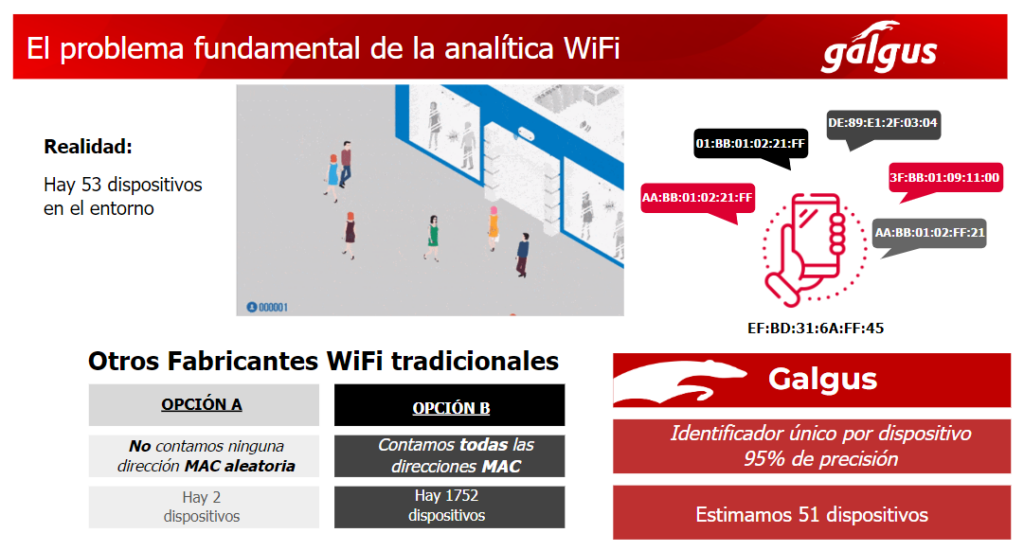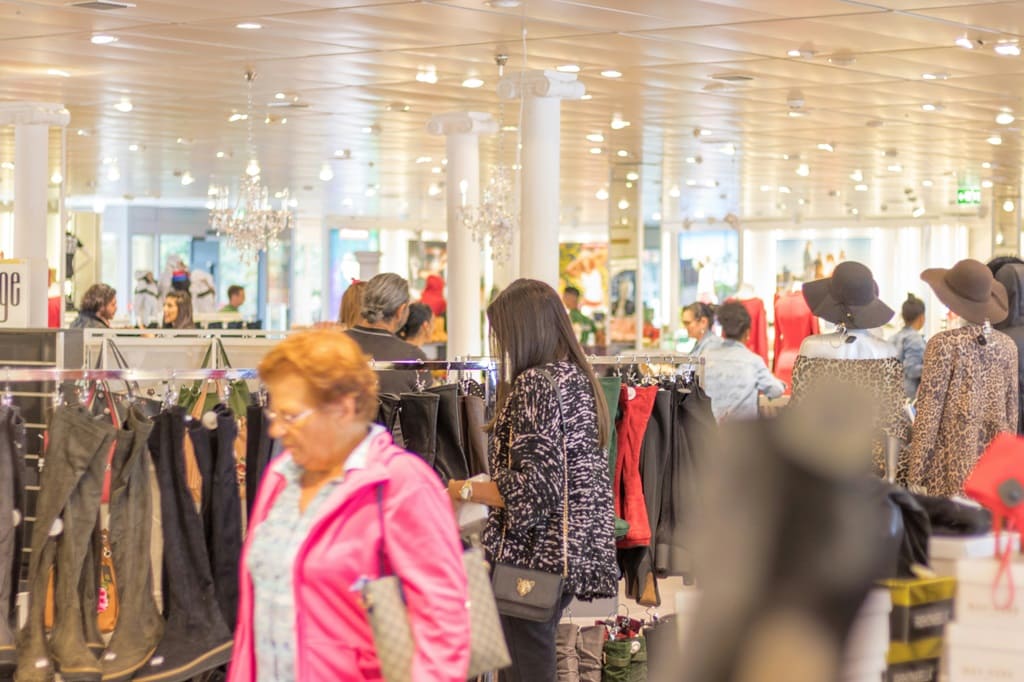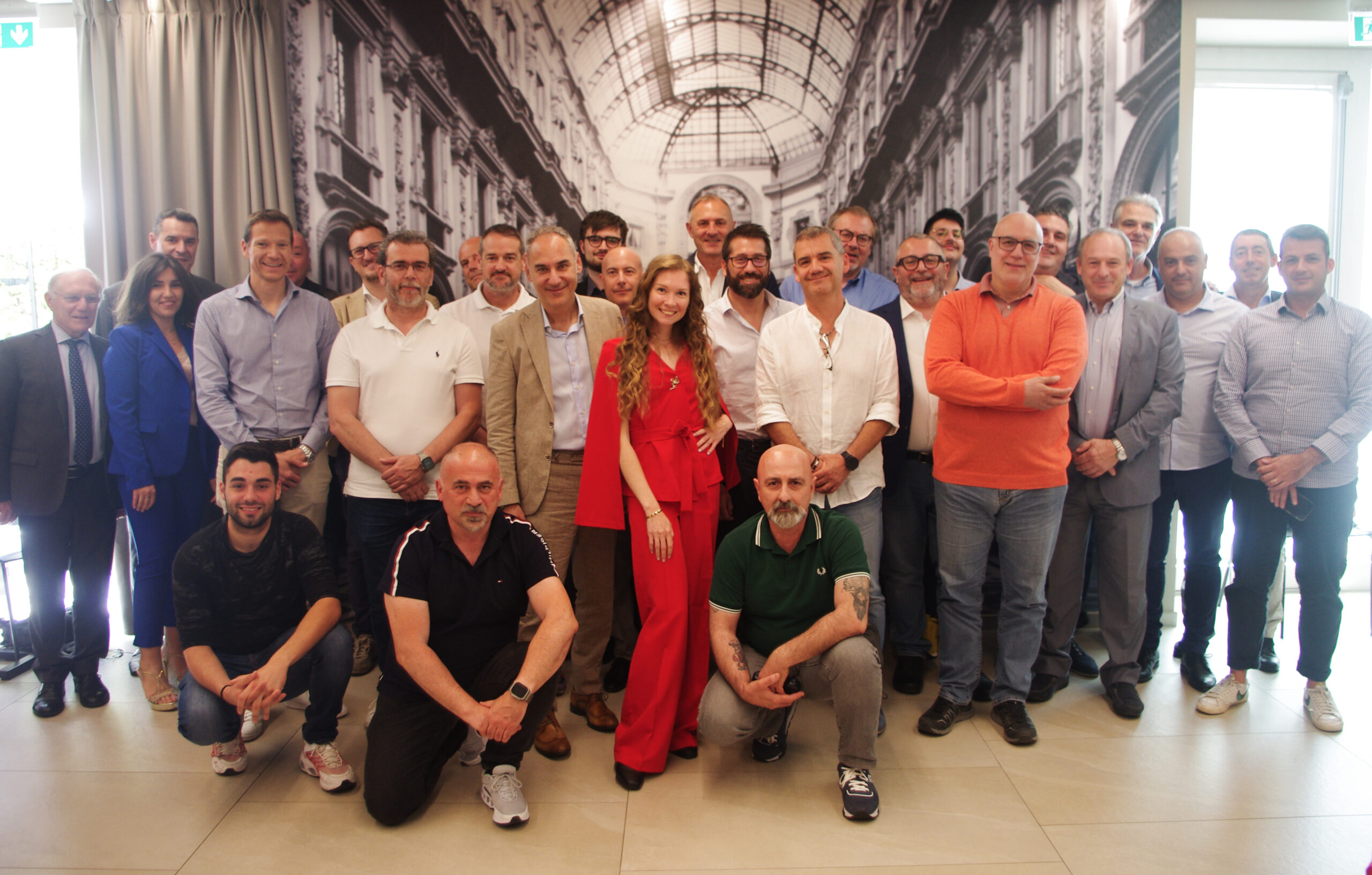Wi-Fi technology brings retailers closer than ever to the ability to understand how people behave when they pass through their establishments. With this, critical management decision-making is made easier and faster. Discover what these decisions are and what differentiating solution Galgus proposes to apply them in this article.
What is foot traffic analysis and what does it bring to the retail sector?
In retail, foot traffic is a term used to describe the number of people entering or passing through the establishment. This is an important metric, as higher in-person traffic can be intimately related to higher sales and revenue figures.
The great differentiating value provided by data on foot traffic is that it is behavioral, that is, it focuses on the user’s own actions, not on their opinions, which can be far from what they end up doing.
Many and varied companies and institutions use foot traffic as the basis for many key management decisions. This data is often used to measure and segment visits, understand where customers are coming from and their preferences. They can also be combined with other data, such as demographics, to better understand what’s happening in a particular location.
The value of Wi-Fi technology for foot traffic analysis
When it comes to capturing this data on foot traffic analysis, there are several technologies on the market. Wi-Fi stands out among them. In this case, we take advantage of the signals emitted by devices when they are not connected to the network (even in many cases with the Wi-Fi button turned off). Therefore, we count devices, not people, both connected and not.
Wi-Fi has certain advantages that make it stand out among other technologies, such as:
- You don’t need to annoy the user, install apps, or grant permissions. You don’t need to activate Bluetooth, or GPS. In most cases, you don’t even need the smartphone to have the Wi-Fi button active.
- You need to deploy less hardware than with a camera system, volumetric sensors, RFID, specks, beacons, etc.
- In addition, the same network that is providing a quality Internet access service can be used for analytics, without any degradation of the service.
That said, in environments such as stores or shopping malls, where there are people who work during their day, but there are also visitors and customers, it is important to note that we can separate visiting devices from devices that correspond to workers, or those that are permanent.
What is the main challenge and how do we solve it?

This is the randomization of the MAC addresses of the devices. Those who are less than 4 years old continuously spoof (rotating) random MAC addresses. Some smartphones show 100 different MACs in a minute, while others show only a couple of them.
Therefore, it is useless to make “rules of three” to try to “translate” MACs to devices directly. In addition, this behavior changes every few months with new releases of operating systems or new models.
For devices connected to the Wi-Fi network, they have a MAC that is fixed and stable as long as they connect to the same SSID, so it can be tracked inside the facility, know if it is the same customer returning to the establishment, etc.
However, for non-connected devices, the MAC rotates continuously and poses a major challenge.
At Galgus, we’ve solved this by creating an AI-based fingerprint that identifies the device as long as it remains near our APs. Therefore, the accuracy of these measurements increases significantly.
Applications of foot traffic analysis in retail
Successful retailers understand that there is a direct correlation between foot traffic and the store’s bottom line, and therefore underscore the critical importance of monitoring and optimizing it.
This opens the door to a series of applications that can be summarized as:
1. Gain insights into customer behavior
People flows data offers valuable insights into customer behavior and preferences, providing retailers with the ability to make informed decisions about store design, product variety, and marketing strategies.
2. Site Selection
Site choice becomes an essential strategic component for physical entities. Foot traffic analysis allows retailers to gain key insights into the optimal city, area and location for a new project, assessing the viability and profitability of their future investments.
3. Forecast Demand
The visible connection between foot traffic and revenue allows businesses to deeply understand their projected performance. Accurate estimation of revenue and demand across multiple locations, through foot traffic data, refines supply chain optimization and facilitates strategic planning.
4. Enriching the shopping experience

Foot traffic patterns provide valuable insights to improve the customer experience by identifying areas of congestion or inefficiencies in store design. Addressing these concerns allows retailers to create a seamless shopping experience, fostering customer satisfaction and loyalty .
5. Optimizing Staffing and Operations
Foot traffic data analytics empowers retailers to optimize staffing levels and maintain operational efficiency. By recognizing peak times and patterns, retailers can allocate adequate staff during busy periods and reduce costs by minimizing staff presence at quieter times.
With these 5 fundamental applications, you can already get an idea of the value of foot traffic analysis for businesses in the retail sector. A value that can only be taken advantage of if you have reliable and up-to-date data.
To achieve this, Galgus provides a unique Presence & Location Analytics Wi-Fi technology in the market , recognized by Gartner for its disruptive nature and which provides much higher accuracy than other alternatives on the market.
If you want to know more about it, we encourage you to contact our team and solve any questions you may have about it.









